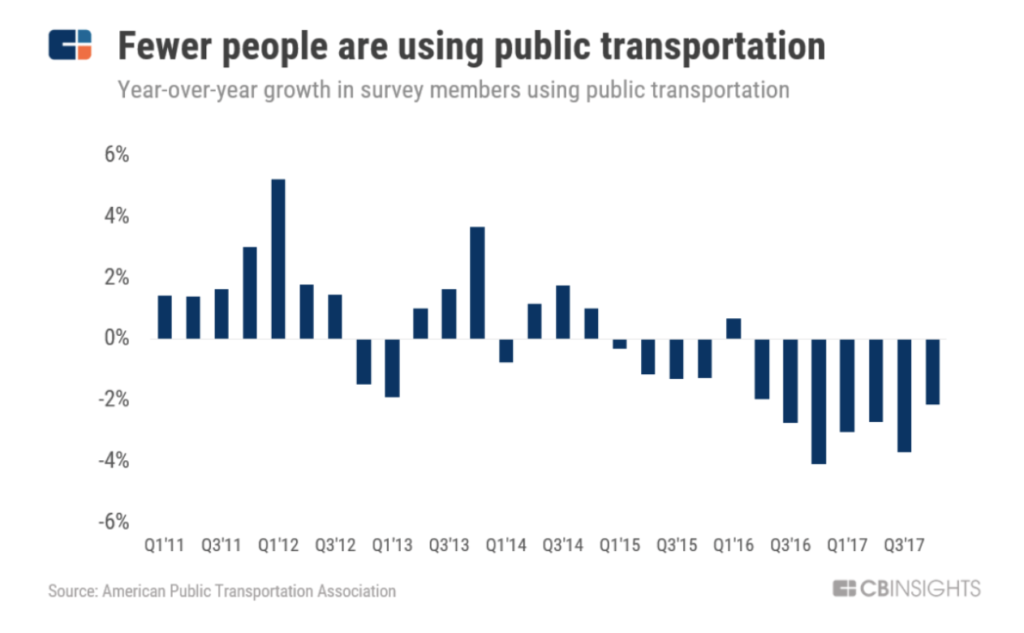There are many reasons why individuals opt to take public transportation. It is financially more affordable, convenience and speed. Though in cities like New York and Los Angeles, citizens have been complaining that the transportation price has risen too high and, especially in New York, commuters are not seeing any change reflecting in repairs and upgrades and are therefore turning to other modes of transportation.
In August, “Annual subway ridership fell in 2017 to about 1.73 billion trips, down about 2 percent from 2015, according to statistics from the Metropolitan Transportation Authority, and subway officials said ridership continues to slip, falling during the first five months of this year by about 2 percent.” (NY Times) In New York, this 1.73 billion trips, with each trip costing $2.75, that would total to over $4.75 billion.
But is that enough to cover the cost of rebuilding the underground systems and ensuring up to date security that was built in 1953? It is a challenge to make that conclusion when the city is home to “The Most Expensive Subway Track on Earth.”
New York is not the only city where natives fear that their form of public transportation is getting too expensive. Angelenos in California must pay $1.75 per ride, not including transfers. So my ride from USC campus to Glendale which includes 3 transfers would cost $5.25 each way and take over an hour. While I could instead take an Uber Pool Express, which is consistently around $7 and gets me home in half the time.
Los Angeles also has had an influx of electric scooters interrupt their mission of encouraging commuters to use their metro rail, bus, and bike systems. Companies like Bird, Lime bike and now Uber Jump in Santa Monica, are seamless and convenient forms of transportation which only cost $1 to unlock and about $0.15 to ride per minute. But how do these startups contribute to the local and national economy, and is it to the same extent that investing in public transit would have?
These companies contribute to finding the solutions for micromobility in urban environments. Creating vehicles built for first and last mile solutions. This is because, “part of the hype surrounding the micromobility space stems from the fact that roughly 60% of trips in the US are five miles or less.” (CB Insights) and that fewer people are already choosing to find other means of transportation besides public transit. Since 2015, according to the American Public Transportation Association, there has been a 4% decrease in public transportation usage.
This could cause a long-term economic problem for cities budgets to have funds to repair, replace, and keep up with the maintenance of pre-existing and future transport plans. Though the micromobility startups show no sign of slowing down their usage and losing their hype, besides legislation restraints, cities will have to find ways to keep their riders riding.



Leave a Reply
You must be logged in to post a comment.